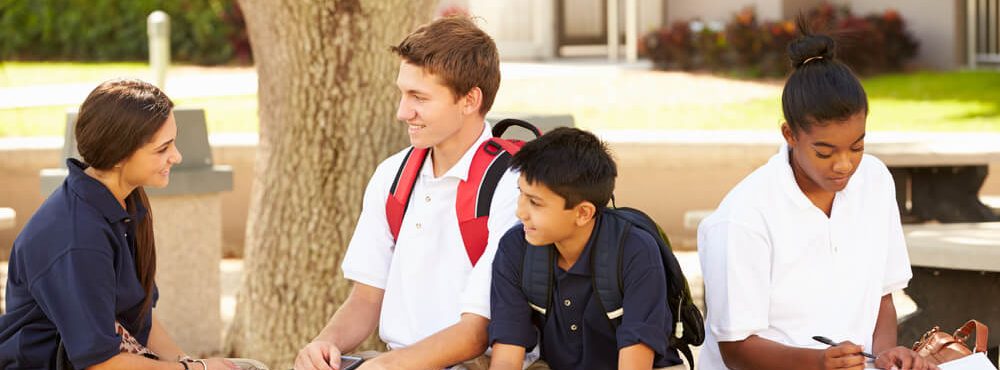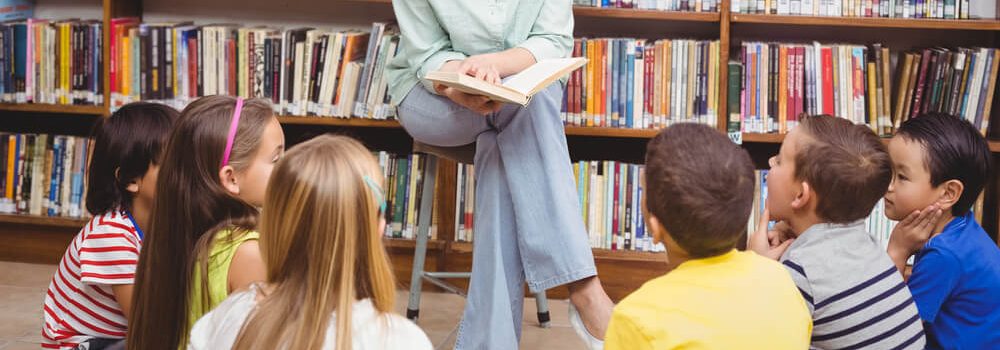Student-centric advice and objective recommendations
Higher education has never been more confusing or expensive. Our goal is to help you navigate the very big decisions related to higher ed with objective information and expert advice. Each piece of content on the site is original, based on extensive research, and reviewed by multiple editors, including a subject matter expert. This ensures that all of our content is up-to-date, useful, accurate, and thorough.
Our reviews and recommendations are based on extensive research, testing, and feedback. We may receive commission from links on our website, but that doesn’t affect our editors’ opinions. Our marketing partners don’t review, approve or endorse our editorial content. It’s accurate to the best of our knowledge when posted. You can find a complete list of our partners here.
What Is a Montessori School?
 By
Cece Gilmore
By
Cece Gilmore 
Cece Gilmore is a Content Writer at Scholarships360. Cece earned her undergraduate degree in Journalism and Mass Communications from Arizona State University. While at ASU, she was the education editor as well as a published staff reporter at Downtown Devil. Cece was also the co-host of her own radio show on Blaze Radio ASU.
Full BioLearn about our editorial policies

Maria Geiger is Director of Content at Scholarships360. She is a former online educational technology instructor and adjunct writing instructor. In addition to education reform, Maria’s interests include viewpoint diversity, blended/flipped learning, digital communication, and integrating media/web tools into the curriculum to better facilitate student engagement. Maria earned both a B.A. and an M.A. in English Literature from Monmouth University, an M. Ed. in Education from Monmouth University, and a Virtual Online Teaching Certificate (VOLT) from the University of Pennsylvania.
Full BioLearn about our editorial policies

A Montessori school offers a unique approach to childhood education through hands-on learning. While this idea is widely accepted today, when first introduced in 1907, it was considered revolutionary. If you are curious about Montessori schools, keep reading our guide to learn about the history and definition of what a Montessori school is. We also include a list of the pros and cons of attending a Montessori school.
History of the creation of Montessori schools
Maria Montessori was an Italian physician who became intrigued by childhood development and education through her role as a physician. Montessori then continued her own education by studying philosophy and psychology. During this time, she began to question the prevailing methods of teaching children. In 1907, Maria opened the first Montessori school, naming it the Casa dei Bambini (Italian for “Children’s House”). The preschool allowed children to take reign of their own learning.
The child-centered teaching methods caught on like wildfire. Maria studied, wrote, and established countless teaching training programs throughout Europe. This new-found “Montessori Method” quickly reached the United States, where Montessori schools have and continue to bloom in the present day. There are now more than 3,000 Montessori schools operating in the United States.
What is a Montessori school?
A Montessori school is an educational institution that teaches a Montessori-based curriculum. The Montessori Method is a child-centered method of education that involves child-led activities. Teachers are guides who encourage children to be independent self-starters.
Maria Montessori believed that children learn significantly better when they are able to choose what they want to learn. In that regard, Montessori schools look different from typical classrooms.
Some unique features of a Montessori school include the following:
- Various stations filled with different activities for students to choose from at any time
- Teachers moving around the classroom from group to group rather than standing at the front of the classroom
- A non-traditional grading system
Each activity at a Montessori school advances the development of the students. Typically, these activities will not have instructions, leaving it to students to figure out what to do for themselves. Montessori schools view children as “navigators of life” who share different interests– Montessori schools recognize that not all children learn the same way.
Also see: All about charter schools vs. public schools
What are some pros of a Montessori school?
Hands-on learning
Montessori schools create an environment that allows students to work, learn, and develop all at their own pace. Children are exposed to lessons and activities that build upon their skills. Typically, a Montessori school looks like a giant playground. Many Montessori schools utilize sensory-based materials that allow students to choose what they want to do and enjoy the learning process at their own pace.
Independence for students
The Montessori Method emphasizes and encourages students to act independently. It encourages students to develop a creative freedom and entrepreneurial mindset. Because most of the learning is self-directed, children gain a sense of independence and confidence in their own abilities.
Inclusive of special needs students
From the beginning, Maria Montessori envisioned a curriculum that included children with special needs. With the Montessori Method, children are typically grouped with other children of different ages and have the same teacher for countless years in a row. Therefore, there is no pressure or expectation for any student to keep up with their peers. Rather, Montessori schools emphasize creating a safe environment for students to learn at their own pace. This environment creates an extremely safe one for students with special needs. Students receive individualized education that supports them throughout their own personal educational journey.
Creates a love for learning
Montessori schools allow children to put their own education into their own hands. This means that students can select activities that appeal to their personal interests. Allowing students to choose their own paths and do what they love facilitates a love for learning.
Also see: What are parochial schools?
What are some cons of a Montessori school?
Cost/Accessibility
Unfortunately, it is hard for Montessori schools to keep their tuition low because of the costs associated with buying the necessary activity materials and teacher training. Therefore, it can be difficult for some students to access Montessori schools. There are some public Montessori schools in some areas, however, the vast majority of them are private and charge tuition fees.
Curriculum
The Montessori curriculum is a less-structured curriculum than those taught at a typical public school. Some students may not thrive in that type of environment. For example, children with behavior issues that need structure and rules may not excel in a Montessori classroom.
Also see: Top middle school scholarships
Also see: What is a Waldorf school?
Frequently asked questions about Montessori schools
Who can attend a Montessori school?
Currently, most Montessori schools offer programs for children’s ages 2.5 to 6 years old. However, there some Montessori schools also offer programs for the following age groups:
If you or your child fits into any of these age groups, a Montessori school may be the right fit. However, it is also important to note that most Montessori schools are private institutions that charge tuition.
Do Montessori schools follow a curriculum?
If children can work at their own pace, don’t they fall behind?
Do Montessori schools give grades?


